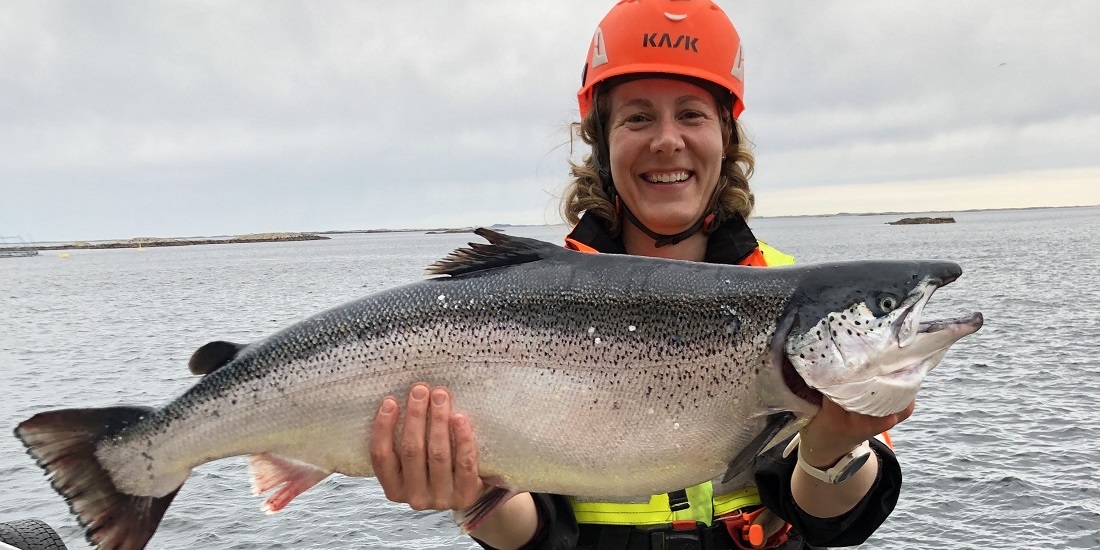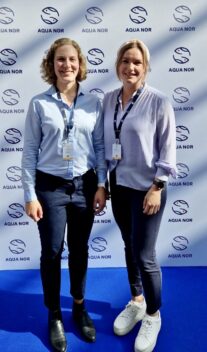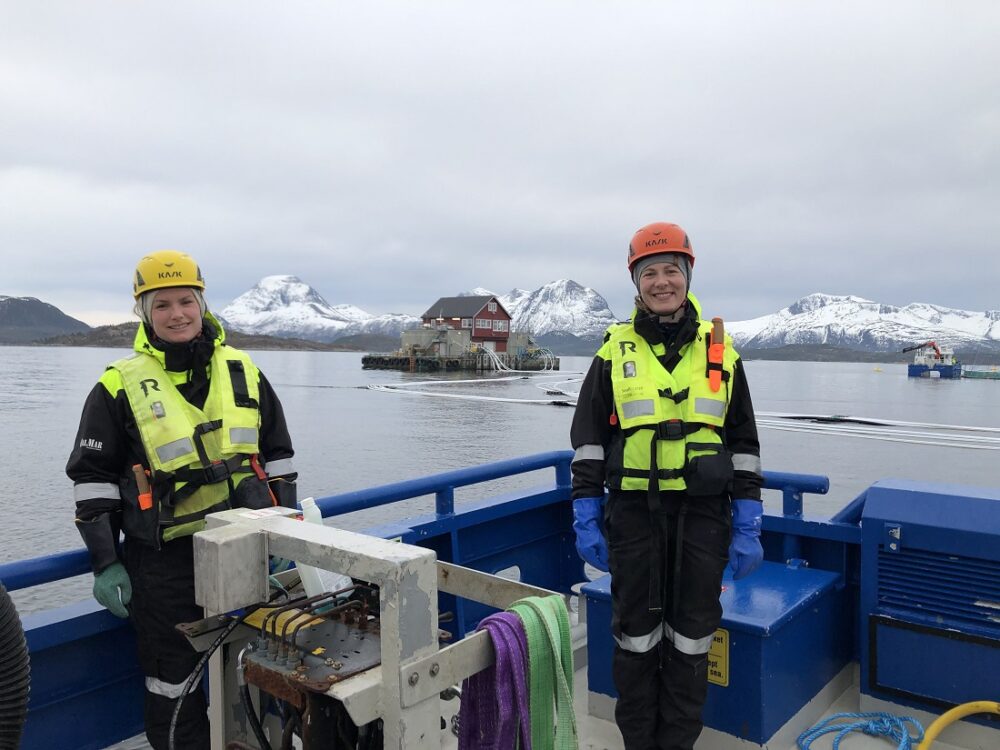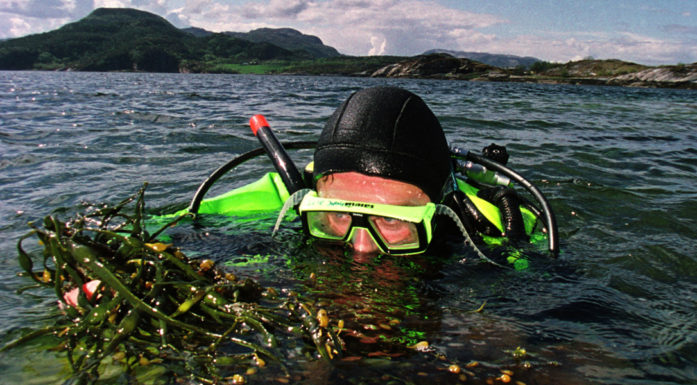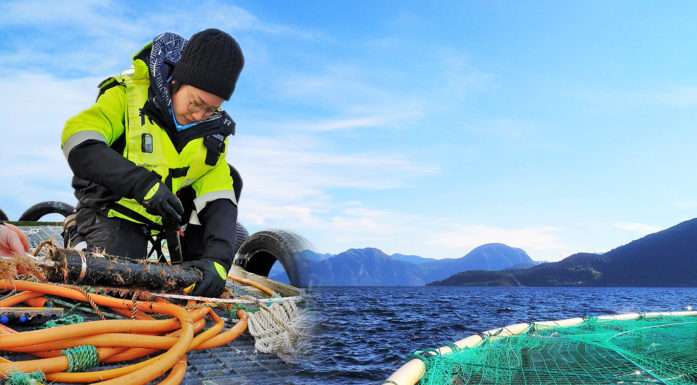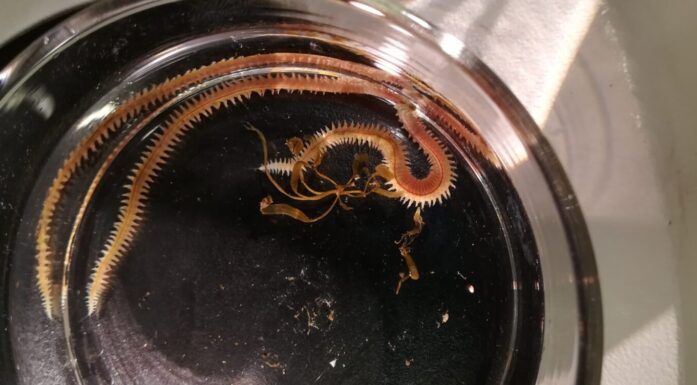Salmon that eat salmon are more environmentally friendly
We should use all parts of whole farmed salmon and keep more of the residuals here in Norway. Researchers say this will help protect the environment while ensuring salmon welfare.
Using a larger proportion of each individual salmon here in Norway will make the aquaculture industry less dependent on importing ingredients for salmon feed. Using locally produced raw materials is also good for the environment.
“Norway currently exports a lot of whole salmon, which include the head, skin and bones. Instead, we could use this remaining raw material to make food or salmon feed ingredients in Norway,” says Ingrid Schafroth Sandbakken, an industrial PhD candidate at Nutrimar in Trondheim, who is affiliated with the Faculty of Natural Sciences at NTNU.
Much of Norway’s salmon exports consist of salmon where only the intestines have been removed. However, after a salmon has been filleted, there is still a lot of food left over. This can of course be boiled to make stock, but it can also be used for many other purposes.
“These leftovers can be used to produce salmon oil, salmon meal and salmon hydrolysate, which is what we do at Nutrimar,” says Sandbakken.
Nutrimar processes leftover raw materials that they source from Salmar at Frøya. The research is funded by Nutrimar and the Research Council of Norway through the Industrial PhD scheme.
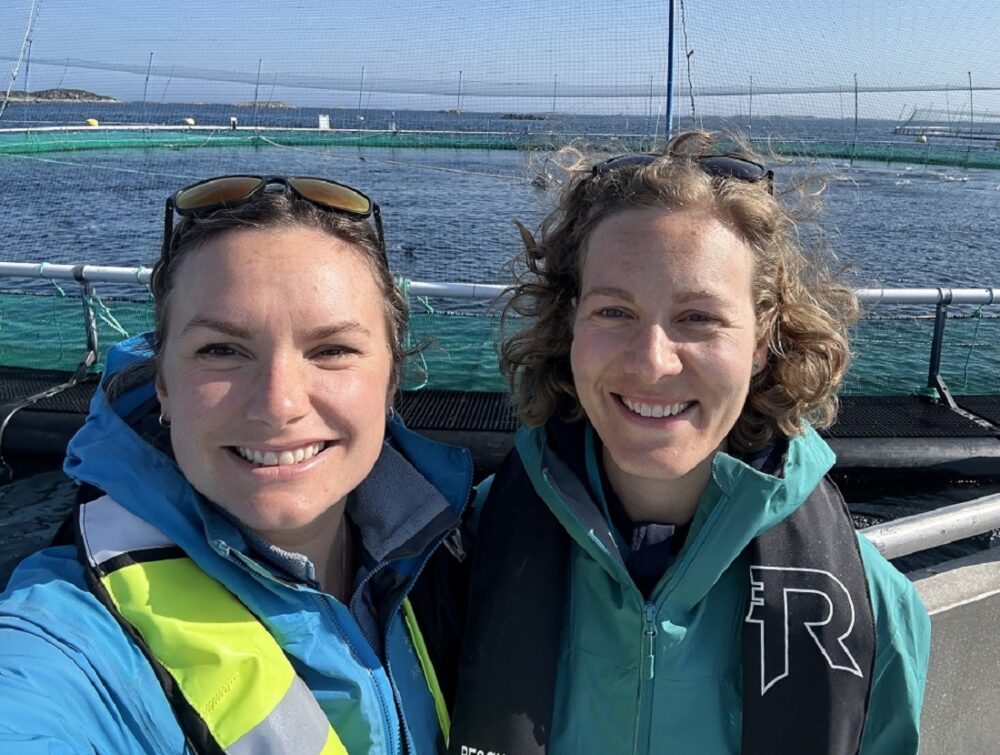
Kathrine Kjos Five and Ingrid Schafroth Sandbakken are working together to better use salmon byproducts. Photo: Kathrine Kjos Five, Nutrimar.
So, what is salmon hydrolysate?
Salmon hydrolysate is produced when leftover raw materials have been broken down with the help of enzymes. These are found naturally in the stomachs of fish (and humans) and help digest food and break down nutrients into smaller pieces that can then be absorbed into the intestines.
“The enzymes cleave the bonds that exist between amino acids in the proteins to form peptides and free amino acids,” says Sandbakken.
The hydrolysate can then be reintroduced into the food chain by giving it to salmon. The advantages of using hydrolysate are that it is easily digestible and tastes good, so that the fish eat more.
Currently, salmon hydrolysate is mainly used in pet food, but there is nothing stopping it from being used by the salmon industry instead. Norwegian legislation permits the use of salmon oil and salmon hydrolysate in salmon feed, and salmon are happy to eat it.
Salmon are predatory fish
“You might think this is cannibalism? It’s not, however, because the proteins have been broken down so much that their origin is not recognizable without conducting DNA analyses,” says Sandbakken.
“Salmon are predatory fish. In the wild, predatory fish don’t differentiate between species. They only distinguish between what fits into their mouth and what doesn’t,” she explains.
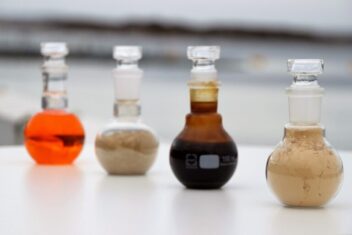
Salmon oil, salmon meal, concentrated salmon hydrolysate, and spray-dried salmon hydrolysate. Spray-dried hydrolysate is used in the research. It doesn’t look very appetizing, but the salmon enjoy it. Photo: Nutrimar.
Wild salmon have nothing against a little cannibalism, and other species such as cod are cannibals to a much greater extent. It is consequently perfectly safe to use salmon leftover raw material in salmon feed. Today’s salmon feed accounts for more than 75 per cent of greenhouse gas emissions from the salmon industry.
“The Government set a goal in the Hurdal Platform stating that all feed for Norwegian animals and fish must be 100 per cent sustainable by 2030. This means we have to make maximum use of the resources that are already available to us, in addition to producing completely new types of feed ingredients. Salmon guts and offcuts are not waste, they are valuable residual raw materials that can be reintroduced into the food chain,” says Kathrine Kjos Five, another industrial PhD candidate working at Nutrimar.
Huge need for feed
“We have a huge need for new local and sustainable feed ingredients for farmed salmon,” says Kjos Five.
Every year, the Norwegian salmon industry produces approximately 525,000 tonnes of residual raw material. This could have resulted in 160,000 tonnes of salmon oil and 47,000 tonnes of salmon hydrolysate if all of it had been hydrolysed in Norway. Both salmon oil and salmon hydrolysate are legal and safe to give back to salmon. However, feeding salmon with salmon meal is currently prohibited because of the regulations that are there to prevent prion diseases.
“Using leftover raw materials for feed would be both locally produced and sustainable,” says Sandbakken.
Instead, almost all the feed ingredients are currently imported from far away. Most salmon feed today is based on plant products, much of which could have been used for human consumption. Only 8 per cent of salmon feed ingredients are produced in Norway.
“The aquaculture industry has a huge need for raw materials. It is now approaching an annual consumption of two million tonnes. By comparison, Norway’s entire grain production in 2021 was only 1.2 million tonnes,” says Rolf Erik Olsen, professor at NTNU’s Department of Biology who is supervising the two PhD candidates.
“Increasing the use of local raw materials, and not least raw materials that cannot be used for human consumption, will be very important in the future,” says Olsen.
He also underscores that salmon guts and offcuts are not waste, they are valuable residual raw materials that can be reintroduced to the food chain.
The use of residual raw materials will be increasingly important, both from livestock production on land, and from the ocean in the form of offcuts from the salmon industry. We can also use seaweed and other as yet unused raw materials.
“Salmon production is one of the really big producers of residual raw material in Norway, and it will be very important to make use of these resources,” Olsen said.
Scepticism from the industry
“The industry has been sceptical about feeding salmon with salmon. Fish farmers and consumers are afraid that salmon may develop a prion disease, like mad cow disease in cattle, among other concerns,” says Sandbakken.
Prions are proteins that can cause disease in mammals, but prion diseases have not been found in fish or birds. These diseases are rare, but can be fatal to humans. One such disease is mad cow disease.
A few decades ago, there were several outbreaks of mad cow disease in Europe, which in turn could cause disease in people who ate those cows. The outbreaks were caused when bone meal and meat from other cows were mixed into the feed. The prions spread from this bone meal to the cows.
“No prions have been found in the salmon hydrolysate,” say Kjos Five and Sandbakken, who have checked this using two different methods.
“Even if we had found prions, there is nothing to suggest that prions from fish cause disease in humans, since there is a species barrier for such diseases,” says Sandbakken.
Good digestion results in better growth
Not only is it safe for salmon to eat salmon hydrolysate, researchers at Nutrimar want to replace the gold standard for protein in salmon feed, namely fish meal, with salmon hydrolysate.
“We found that salmon grew faster and larger if salmon hydrolysate was mixed into the feed,” says Sandbakken.
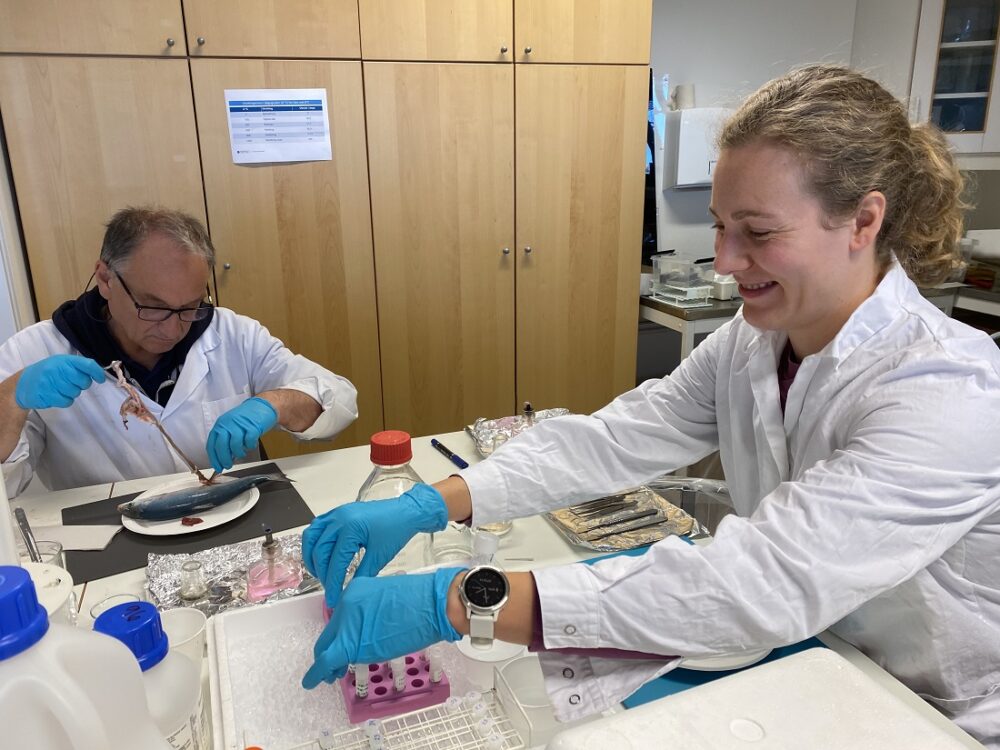
Rolf Erik Olsen and Ingrid Scafroth Sandbakken working with salmon. Photo: Kathrine Kjos Five, Nutrimar.
The fish digest proteins and amino acids better and absorb a larger proportion of the minerals in the hydrolysate feed than from the feed with added fish meal.
Salmon residual raw materials are an unused feed resource with huge potential in aquaculture. Salmon hydrolysate is a safe and effective feed ingredient that increases both fish growth and the industry’s sustainability.
References: Ingrid Schafroth Sandbakken, Kathrine Kjos Five, Tora Bardal, Jarred Lee Knapp, Rolf Erik Olsen, Salmon hydrolysate as a protein source for Atlantic salmon; prion content and effects on growth, digestibility and gut health, Aquaculture, Volume 576, 2023, 739863, ISSN 0044-8486 https://doi.org/10.1016/j.aquaculture.2023.739863
